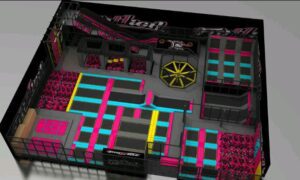Alcohol addiction can have a devastating impact on a person’s health, relationships, and quality of life. But there is hope. Alcohol rehab offers a structured and supportive environment where individuals can safely detox, gain insight into their behaviors, and begin rebuilding their lives. If you’ve ever wondered “What happens in alcohol rehab?”, this guide walks you through every step of the journey so you know what to expect and how recovery unfolds.
Step 1: Assessment and Intake
The first step in alcohol rehab is a comprehensive assessment and intake, which typically takes place during the first 24–48 hours after admission. This stage involves meeting with medical staff, addiction specialists, and licensed therapists to discuss your:
- History of alcohol use
- Physical and mental health conditions
- Past attempts at sobriety
- Family history of addiction
- Social support system
- Any medications you are currently taking
This process may include blood tests, physical exams, mental health screenings, and interviews. The goal is to develop a customized treatment plan that aligns with your unique needs. For individuals with dual diagnoses (e.g., alcohol addiction and depression), the treatment plan may include integrated care that addresses both conditions simultaneously.
This stage also allows the clinical team to determine if medical detox is necessary and to plan for the safest and most effective treatment pathway.
Step 2: Medically Supervised Detox
Detoxification, or “detox,” is the process of eliminating alcohol from the body. For many, this is a critical phase because withdrawal symptoms can range from mild to life-threatening. Common symptoms include:
- Anxiety or irritability
- Nausea and vomiting
- Insomnia
- Sweating and rapid heartbeat
- Seizures or hallucinations in severe cases (known as delirium tremens)
In a medically supervised setting, trained professionals monitor vital signs and provide medications to reduce withdrawal symptoms and prevent complications. Medications such as benzodiazepines, anticonvulsants, or beta blockers may be used depending on the individual’s needs.
Detox typically lasts 3 to 7 days, but can vary based on the severity and duration of the alcohol use. The primary goal of detox is to stabilize the individual so they can fully engage in the therapeutic aspects of rehab that follow.
Step 3: Therapy and Counseling
Once detox is complete, the focus turns to addressing the root causes of addiction through therapy and counseling. This stage is the heart of rehab, helping individuals identify triggers, develop healthier thought patterns, and build coping strategies.
Types of therapy may include:
- Cognitive Behavioral Therapy (CBT): Helps individuals recognize and change destructive behaviors and thought patterns.
- Dialectical Behavior Therapy (DBT): Teaches emotional regulation and distress tolerance, often helpful for those with intense emotional swings or co-occurring disorders.
- Individual Counseling: Offers one-on-one time with a licensed therapist to explore trauma, self-esteem, and personal goals.
- Group Therapy: Provides peer support and fosters connection through shared experiences. Many find it empowering to know they’re not alone.
- Family Therapy: Involves loved ones in the healing process, improves communication, and works toward repairing relationships strained by alcohol misuse.
This stage is where people begin to understand their addiction, build self-awareness, and learn the emotional tools they need to stay sober.
Step 4: Education and Skill Building
Alcohol rehab isn’t just about staying sober—it’s about learning how to live well without alcohol. Education and life skills training are crucial parts of this process. Clients participate in workshops and lectures on:
- The science of addiction and how alcohol affects the brain and body
- Strategies for preventing relapse and recognizing early warning signs
- Managing cravings and emotional stressors
- Healthy communication and boundary-setting
- Rebuilding self-confidence and self-worth
In some programs, vocational training, budgeting workshops, or resume writing assistance may also be offered to help clients prepare for a successful return to everyday life. These skills lay the groundwork for long-term independence and empower clients to make positive, sustainable choices.
Step 5: Holistic and Wellness Activities
Many rehab centers take a holistic approach to recovery, recognizing that healing involves the body, mind, and spirit. As part of a well-rounded treatment plan, clients may participate in a variety of activities designed to reduce stress, improve emotional balance, and foster a greater sense of well-being.
Common holistic therapies include:
- Yoga and meditation to promote mindfulness and relaxation
- Art and music therapy as creative outlets for expression and healing
- Nutritional counseling to restore physical health and energy
- Recreational therapy such as hiking, swimming, or sports, can boost mood and physical fitness
These activities are more than just “extras”—they help individuals connect with themselves and their recovery on a deeper level, enhancing resilience and overall quality of life.
Step 6: Aftercare and Long-Term Recovery Support
Rehab doesn’t end when the program ends—aftercare is vital for preventing relapse and supporting continued growth. Before discharge, clients work with a case manager or counselor to develop a personalized aftercare plan, which may include:
- Outpatient therapy or counseling
- Participation in support groups such as Alcoholics Anonymous (AA), SMART Recovery, or other community-based groups
- Sober living environments that provide structure and peer support
- Continued medical or psychiatric care for co-occurring mental health conditions
- Regular follow-up appointments or check-ins with the rehab facility
Many programs offer alumni networks or monthly gatherings to help clients stay connected and supported. Long-term recovery is a journey, and having a strong aftercare plan ensures that individuals are never alone in the process.
Summing Up
Understanding what happens in alcohol rehab can make seeking help feel less intimidating. From assessment and detox to therapy, skill-building, and aftercare, each phase is designed to support recovery and promote lasting transformation.
If you or someone you love is struggling with alcohol addiction, don’t wait. Rehab offers a safe, compassionate, and structured environment where healing is possible. The first step is reaching out, and from there, a healthier and more fulfilling life can begin.



































